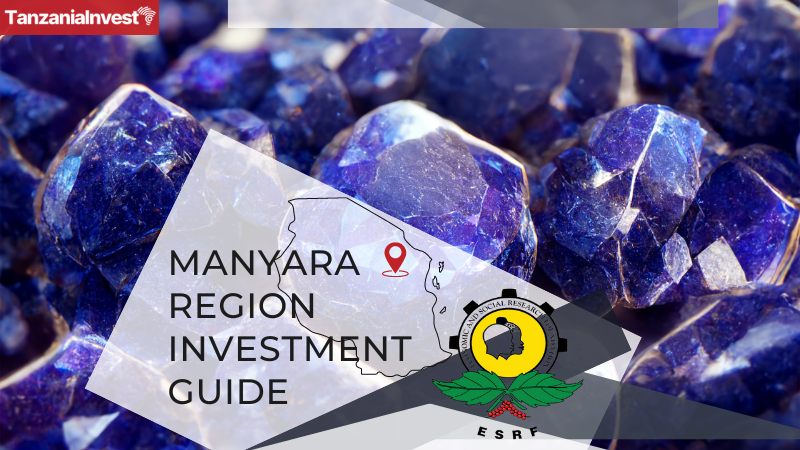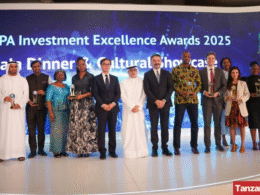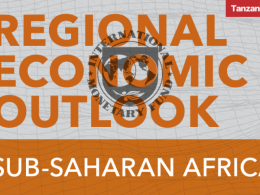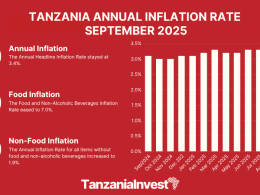The Economic and Social Research Foundation (ESRF) has prepared a detailed investment guide for Tanzania’s Manyara region, highlighting the area’s strategic importance and diverse opportunities for local and foreign investors.
As part of a partnership initiative to reach a wider audience of potential investors, TanzaniaInvest is republishing this guide along with other regional investment guides developed by ESRF.
The Manyara Region presents a unique investment opportunity due to its strategic location, abundant natural resources, and supportive government policies. Priority investment sectors include agriculture, manufacturing, mining, and tourism.
About the Manyara Region
Manyara Region, with Babati Town as its capital, came into being in 2002 when part of the Arusha Region was split to form a new region. It is one of Tanzania’s 31 administrative regions.
The region lies in the North-Eastern quarter of Mainland Tanzania and is bordered by the Arusha Region on the North, the Kilimanjaro and Tanga regions on the East, the Dodoma Region on the South, and the Singida and Shinyanga regions on the West.
Agricultural production, livestock keeping, and mining are the main economic activities in Manyara Region. The major food crops and cash crops that are cultivated by small farmers (peasants) include maize, beans, pigeon peas, sunflower, onions, garlic, coffee, paddy, and finger millet, which are major contributors to the region’s economy.
Livestock is the Region’s second most important economic activity after crop farming, employing an average of 75% of Manyara residents (about 70 to 80% of residents keep livestock). The land designated for livestock production is approximately 2,273,960 ha. The land allocated for ranches is 9,248 ha, which can optimally accommodate approximately 6,677 herds of cattle per year.
The Manyara Region has seven (7) lakes where fishing is the main economic activity of the surrounding community.
The Region is rich in minerals that include tanzanite, ruby, green garnet, green tourmaline and rhodolite, tsavorite and tremolite.
The region is endowed with a variety of wildlife species, ranging from big games to small antelopes distributed in various categories of wildlife-protected areas from open areas, game-controlled areas (GCAs), wildlife management areas (WMAs), and national parks.
The Tarangire and Lake Manyara national parks are where wild animals such as lions, cheetahs, monkeys, mongooses, baboons, caracals, honey badgers, dik-dik, gazelles, wildebeests, zebras, impalas, water bucks, buffaloes, elephants, giraffes, leopards, hippos, crocodiles, wild dogs, more than 550 bird species and many other wild animals can be found.
The Manyara Region has set aside about 2,517.8 ha for industrial development to respond to the national industrialization strategy. These include 1339.8ha demarcated for the establishment of ordinary industrial and agricultural investment parks or more advanced industries registered as Special Economic Zones (SEZ) and Export Processing Zones (EPZ) located in the Simanjiro District.
Why Invest in the Manyara Region
Manyara Region presents a unique investment opportunity due to its strategic location, abundant natural resources, and supportive government policies. Here are some compelling reasons to consider investing in Manyara:
- Strategic Location: Situated in the Northeastern part of Tanzania, Manyara is well-connected to major regions and serves as a gateway to the northern tourist circuit.
- Abundant Resources: The region is rich in minerals, agricultural land, and wildlife, providing diverse investment opportunities.
- Supportive Policies: The Tanzanian government has implemented transparent investment laws and policies to create a favorable business environment.
Priority Investment Sectors
Agriculture and Agro-Processing
Manyara’s fertile land and favorable climate make it ideal for agriculture. Key investment opportunities include:
- Crop Cultivation: Investment in maize, beans, pigeon peas, and sunflower farming.
- Agro-Processing: Establishing processing plants for grains, sunflowers, and horticultural products.
Mining and Mineral Processing
The region is renowned for its mineral wealth, particularly Tanzanite, found exclusively in the Mirerani Hills. Investment opportunities include:
- Tanzanite City Development: Establishing a hub for processing and trading Tanzanite and other minerals.
- Mineral Processing Plants: Setting up facilities to process various minerals, including limestone and gypsum.
Tourism and Hospitality
Manyara is home to iconic national parks and cultural heritage sites, offering vast potential in tourism:
- Eco-Tourism and Lodging: Development of eco-friendly lodges and campsites near Lake Manyara and Tarangire National Parks.
- Cultural Tourism: Promoting the rich cultural heritage of indigenous groups like the Maasai and Hadzabe.
Industrial and Manufacturing
The region has designated areas for industrial development, including:
- Special Economic Zones (SEZs): Establishment of industries within SEZs to benefit from tax incentives.
- Manufacturing Plants: Opportunities in packaging materials, cement, and essential oils processing.
Investment Incentives and Support
The Manyara Regional Government, in collaboration with the Tanzania Investment Centre (TIC), offers various incentives to investors, including:
- Tax Exemptions: Import duty exemptions on capital goods and other fiscal incentives.
- Land Access: Availability of land for industrial and agricultural use.
- Support Services: Assistance in obtaining necessary permits and licenses through a streamlined process.
Contact Information
For further information and assistance, please contact the Manyara Regional Secretariat or the Tanzania Investment Centre. Key contacts include:
- Regional Commissioner’s Office:
- Email: rc@manyara.go.tz
- Phone: +255 27-2510066
- Tanzania Investment Centre:
- Email: info@tic.go.tz
- Phone: +255 22-2113365
Disclaimer
This guidebook was published to provide potential investors with essential information regarding investment opportunities and investment processes in Manyara Region. It does not, in any way, give exhaustive information or detailed practical instructions; rather, it points out sources of other information in both private and public sectors. Most of, if not all, information contained in this guidebook was derived from consultations with regional and district government officials, the private sector, and other non-state actors. Depending on the nature of the investment, potential investors are expected to conduct feasibility studies and/or environmental impact assessments prior to actual investments. Materials in this guidebook should therefore be used only for the intended purposes and not for defense in a legal dispute or in any matter of that nature. The guide is presented in good faith and in cognizance of the Statistics Act, [Cap 351 R.E 2019]. Where a datum point used in this guide unknowingly contradicts an official statistic, it should be deemed an error, and the official statistic should be assumed to be correct.










